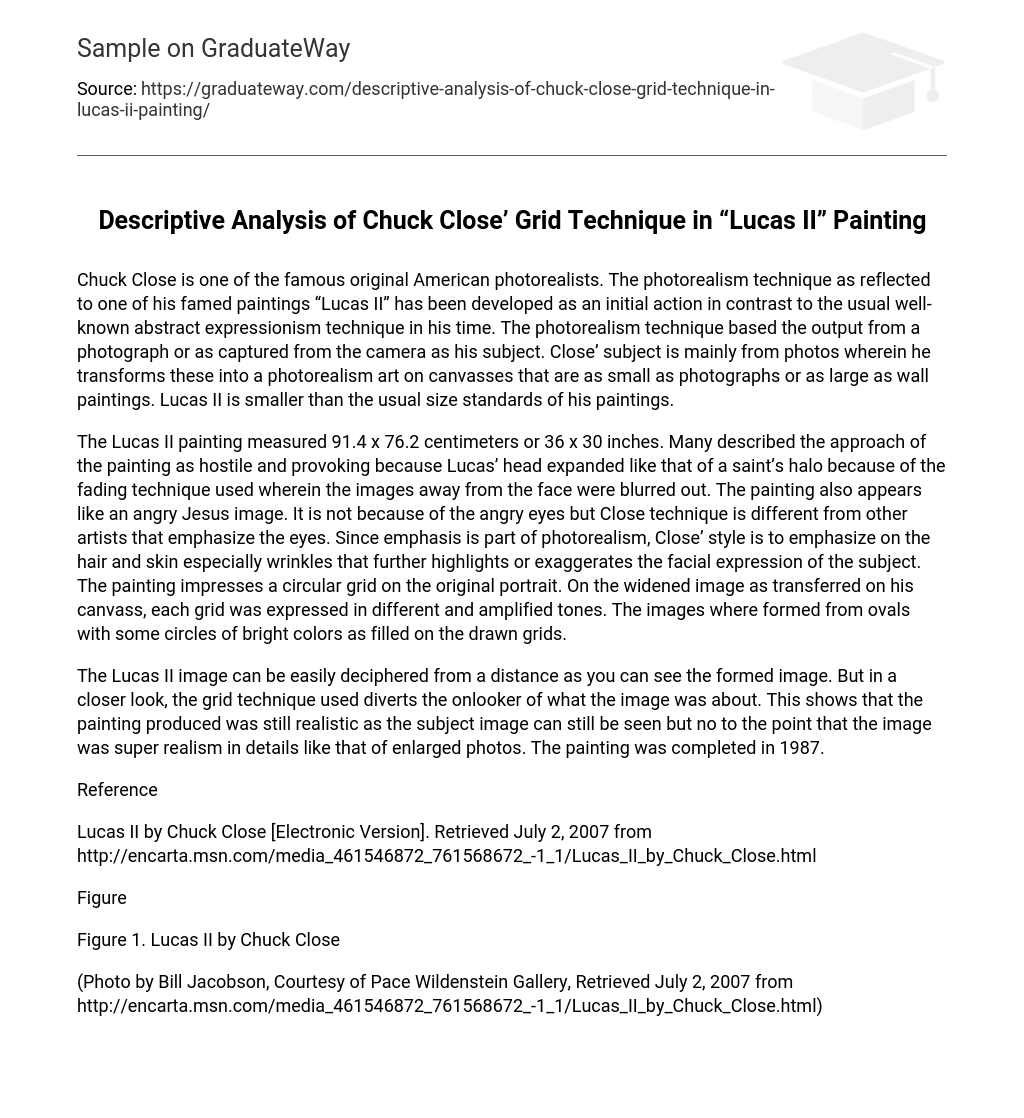Chuck Close is one of the famous original American photorealists. The photorealism technique as reflected to one of his famed paintings “Lucas II” has been developed as an initial action in contrast to the usual well-known abstract expressionism technique in his time. The photorealism technique based the output from a photograph or as captured from the camera as his subject. Close’ subject is mainly from photos wherein he transforms these into a photorealism art on canvasses that are as small as photographs or as large as wall paintings. Lucas II is smaller than the usual size standards of his paintings.
The Lucas II painting measured 91.4 x 76.2 centimeters or 36 x 30 inches. Many described the approach of the painting as hostile and provoking because Lucas’ head expanded like that of a saint’s halo because of the fading technique used wherein the images away from the face were blurred out. The painting also appears like an angry Jesus image. It is not because of the angry eyes but Close technique is different from other artists that emphasize the eyes. Since emphasis is part of photorealism, Close’ style is to emphasize on the hair and skin especially wrinkles that further highlights or exaggerates the facial expression of the subject. The painting impresses a circular grid on the original portrait. On the widened image as transferred on his canvass, each grid was expressed in different and amplified tones. The images where formed from ovals with some circles of bright colors as filled on the drawn grids.
The Lucas II image can be easily deciphered from a distance as you can see the formed image. But in a closer look, the grid technique used diverts the onlooker of what the image was about. This shows that the painting produced was still realistic as the subject image can still be seen but no to the point that the image was super realism in details like that of enlarged photos. The painting was completed in 1987.
Reference
Lucas II by Chuck Close [Electronic Version]. Retrieved July 2, 2007 from http://encarta.msn.com/media_461546872_761568672_-1_1/Lucas_II_by_Chuck_Close.html
Figure
Figure 1. Lucas II by Chuck Close
(Photo by Bill Jacobson, Courtesy of Pace Wildenstein Gallery, Retrieved July 2, 2007 from http://encarta.msn.com/media_461546872_761568672_-1_1/Lucas_II_by_Chuck_Close.html)





